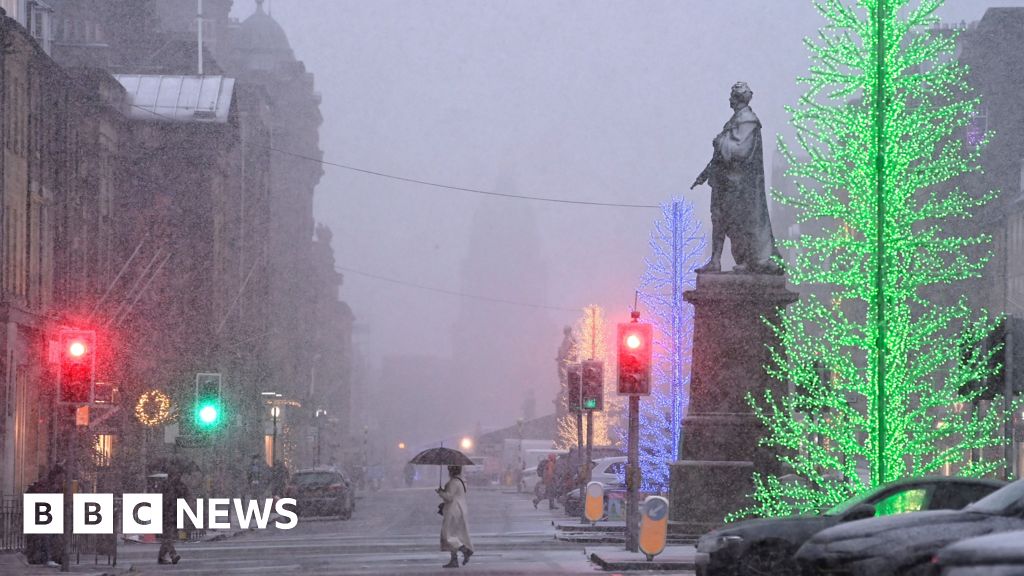World
VisitScotland chief hails global impact of tourism sector

Ms Miller, who has worked for VisitScotland since 2005 and officially succeeded Malcolm Roughead in the top job on October 1, said Scotland’s recovery from the pandemic has been “strong” and had outpaced the tourism sectors in other UK nations.
She also said any visitor levies introduced by local authorities across Scotland should be ring-fenced for investment in tourism infrastructure.
In an interview with The Herald, Ms Miller emphasised that Scotland’s success on the international front “did not happen by accident”, stating that the work to promote the industry did not stop during the pandemic.
Visits by international travellers to Scotland surged by 23% to four million in 2023, with those visitors staying for 34.4 million nights and spending £3.59 billion, according to the International Passenger Survey carried out by the Office for National Statistics. At the same time, residents from Great Britain stayed 35.4 million nights in Scotland last year, spending £3.2bn.
“We did not go quiet during Covid,” Ms Miller said. “We continued as an organisation to keep Scotland front of mind through all of our channels, and the relationships we have with travel and lifestyle media and travel intermediaries in our markets that we knew would be critical to selling Scotland when travel was able to begin again.
“So, we have had that concerted effort. Then, with the very strong event programme that we have in Scotland, and that focus on the ‘perfect stage’ strategy and a fantastic few years of very strong events… it has really allowed us to spotlight Scotland.
Read more:
“I put that international recovery down to those long-term strategic investments that we have made. Where we are now is that for the first time ever, the value of international tourism to Scotland is higher than domestic [tourism] – it was £3.6bn in value terms in 2023. And when you look at some of the markets, you have got the US up 20% in trips, Canada, obviously smaller in volume but up 40%, Australia up 27%. So some of those long-haul markets, that will stay longer [and] spend more, have been really important to that recovery.”
Ms Miller added: “Europe still accounts for about 40% of in-bound [tourists], slightly slower to come back [after Covid] than long-haul, interestingly, and perhaps a bit more price-sensitive. But there is absolutely no doubt that France and Germany, which have always been the top two European markets, are really critical to our sustainable growth, because they will travel year-round.”
The flip side of the international boom is that the domestic tourism market continues to feel the effects of the cost of living crisis. Ms Miller, who entered the industry when she joined Dumfries & Galloway Tourist Board in 2001, said UK-based tourists retain a “strong intent” to explore Scotland, but the “spend and number of trips has reduced”.
“There is definitely insight that people want to use their disposable income on experiences and travel is right up there,” she said. “So for us in the domestic market it is about capitalising on visitors that will travel and look for those unique experiences, because clearly Scotland offers those in spades. But, yes, it has definitely been more challenging.”
While Scottish tourism has benefited from the long-term marketing strategy VisitScotland has put in place, the industry is also benefiting from a wider post-Covid boom in travel, which has seen consumers begin to value experiences, “well-being and connecting to loved ones”.
Ms Miller said: “Initially, we thought, is this just a Covid recovery? But actually I see it as being a long-term trend. Outbound travel is increasing around the world. People want to travel, and people are prioritising travel.
“The challenge for us is how we continue to build on the success that we have had. My vision for the organisation is that we are very much an economic growth agency. Marketing is our DNA, but that means we are marketing and insight-led to make sure that we are prioritising our resources to make sure we get the best return on investment, [and] that we get to the markets and audiences that we know will convert.
“It also means looking at the markets that are not just important today. I want to make sure that we have got that market knowledge, that expertise, that we are building relationships in those emerging markets that are going to be important in the medium and long term.”
Whether international travellers will be deterred from visiting Scotland by the introduction of tourist taxes – a source of long-running debate – is one of the biggest questions facing the industry. Every local authority in Scotland now has the power to introduce a visitor levy, with Edinburgh likely to be the first to do so. City of Edinburgh Council is currently consulting on a draft visitor levy under which it is proposing a 5% surcharge on overnight stays for a maximum of seven days. The authority says the levy could raise up to £50 million a year, which would be used to improve public spaces and leverage investment for new housing.
VisitScotland chaired an expert group at the behest of the Scottish Government to develop guidance for local authorities on how levies are applied, and how the charges may affect the global competitiveness of Scottish tourism. “But it really does require a consultation process, [of] at least three months, around what the levy scheme will look like and how the funds might be used,” Ms Miller said. “It [should] also allow for an 18-month consultation period.
“The guidance also highlights that there is clearly going to be a cost to business for this. The local authority has the ability to look at how they would offset that cost for business, so there are a number of things in that guidance that ensure the levy is going to be in the best interests of the destination, and that the funds are going to be used to benefit the visitor economy, and that is critical.”
Ms Miller added: “Yes, visitors from around the world are used to paying these things. When I have been in America or Barcelona, it is something that you know is standard. The key thing for me is that we think about our competitiveness. We know that value for money is very important for the visitor. The number one driver for people coming into Scotland is history, our landscape, those unique experiences that we offer. We just need to continue to ensure that what we are offering is value for money.”
Another bone of contention for parts of the industry has been the introduction of a licensing regime for short-term letting accommodation providers. The Association of Scotland’s Self-Caterers (ASSC) has campaigned vociferously against the system, arguing that the cost and complexities involved will drive many providers out of the industry.
Asked if she recognises those concerns, Ms Miller replied: “The self-catering sector in Scotland offers a unique proposition, and we have seen strong visitor intent for that type of accommodation. Clearly, we attract different types of visitors to Scotland and not all will stay in a hotel, particularly those visitors that are longer stay, basing themselves in one location, or because they are bringing family and friends.
“I want to ensure that we have offer diversity of accommodation types because we are an inclusive country, and we attract all types of visitors who are looking for different holiday experiences. That is important.
“I would say, globally, we have seen growth in demand for that type of accommodation and I think we have seen in Scotland new types of unique accommodation in that sector, your glamping pods and various other things, so we have a really strong offer. From a VisitScotland point of view we want to obviously retain that strong offer.
“We don’t yet have definitive data on the impact of the regulation of the sector. It will probably be the early part of next year and unfortunately because there was not any baseline data to start with, it is going to be really quite difficult to understand the impact regulation may have had.”
Ms Miller added that VisitScotland has been asked by the Scottish Government to form an expert group to examine where the guidance could be amended to remove any inconsistency in how the licensing regime is being applied.
Meanwhile, asked if she expects the funding for the organisation to be lowered at the Scottish Budget in December, amid the well documented squeeze on public finances, Ms Miller said: “Yes.”
Asked if part of her remit will be to achieve more for less, Ms Miller replied: “For me, it is focus. Let’s focus on the things that will deliver against those objectives of spread, spend, [and] sustainability. Ultimately, what we want is positive growth in the visitor economy, so it is just focusing on the activities that will drive that.”










